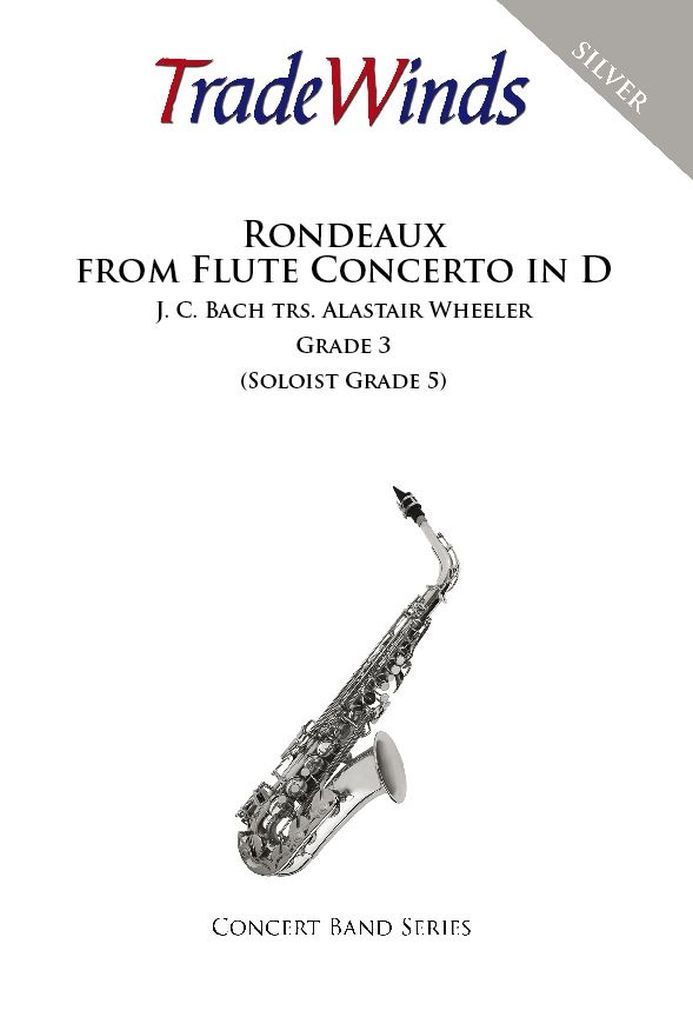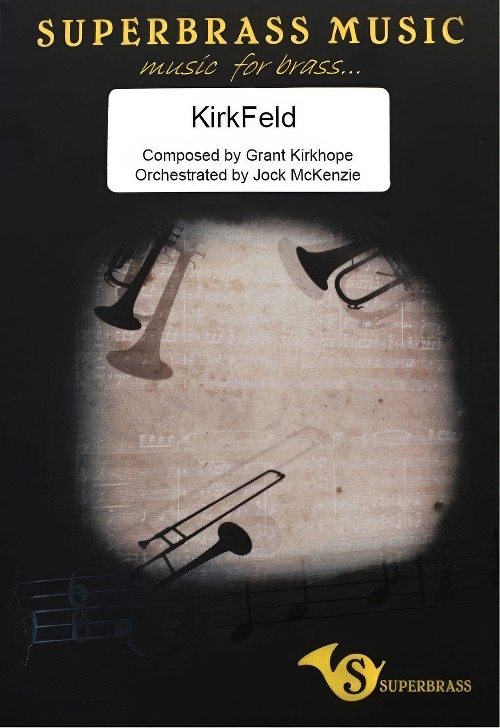Results
-
 £39.95
£39.95 -
£70.99
I'd Do Anything For Love
Estimated dispatch 10-14 working days
-
£70.99
La Maladie d'Amour - Michel Sardou, Yves Dessca & Jacques Revaux - Steve Cortland
Estimated dispatch 10-14 working days
-
£70.99
Maladie d'Amour
Estimated dispatch 10-14 working days
-
£74.99
Toccata In D Minor
Estimated dispatch 10-14 working days
-
 £52.00
£52.00S.C.D.B.A. Fanfare
The letters in the title of this piece serve as its musical inspiration. The piece is designed as a concert opener and has qualities reminiscent of the great fanfares from composer John Williams. The music features tight harmonies with brass flourishes and soaring woodwind lines punctuated by timpani and percussion.
Estimated dispatch 12-14 working days
-
 £125.00
£125.00KirkFeld (Trombone Solo with Concert Band - Score and Parts) - Kirkhope, Grant - McKenzie, Jock
Written for Ian Bousfield and the International Trombone Festival 2017. Grant Kirkhope is a BAFTA nominated British composer who has created the soundtrack for video games that have sold in excess of 30 million copies. From "GoldenEye" to "Banjo-Kazooie", "Viva Pi?ata" to "Donkey Kong", "Kingdoms of Amalur: Reckoning" to "Civilization: Beyond Earth" and "Perfect Dark" to "Castle of Illusion starring Mickey Mouse". He has also recently scored the feature film "The King's Daughter" starring Pierce Brosnan and William Hurt and is currently working on "Yooka Laylee" and "Dropzone". Grant's score for "Viva Pi?ata" was nominated by BAFTA in the Original Score category in its 2007 awards. Grant is represented by the prestigious Gorfaine/Schwartz Agency by Cheryl Tiano and Kevin Korn. Grant has a degree in music from the Royal Northern College of Music, Manchester, where he majored in classical trumpet, is a green card holder and now lives in Agoura Hills, LA with his wife and two children. "Ian and I first met when we were around 15 years old. We both played in our county orchestra, the North Yorkshire Schools Symphony Orchestra (I was a trumpet player). I think we hit it off straight away, as we were definitely a couple of cheeky kids, if you know what I mean! We both ended up playing in Rowntree Mackintosh Brass Band for a while too which Ian's Dad, Trevor conducted. We bumped into each other again when we both went for the Shell/LSO Scholarship. I got to the area finals in Manchester so I was pretty pleased with myself but then I saw Ian and I knew it was all over! Of course Ian went on to win and the rest is history. I saw him again when I was attending the Royal Northern College of Music around 1983 by which time Ian had just got the principal chair at the Halle Orchestra. Then I guess 30 something years went by as we both went about our lives and lost touch. We re-kindled our friendship due to his wife really. She emailed me to say it was Ian's 50th birthday and she was collecting stories from all his friends over the years. After that we got back in touch and then one day on Facebook I got a message from him in typical dry Yorkshire fashion "now then Grant, I had a listen to your music and I think it's good, how about writing a piece for me ?" I was a little bit unsure at first but of course I loved Ian's playing and of course I said yes. Over a Skype call in 2016, he asked me what I thought I'd write. I said since I live in LA I'd like to write a "Hollywood" trombone piece. Imagine if John Williams had written a piece for solo trombone, that's what I'd like to write - well I'd certainly like to try" - Grant Kirkhope
Estimated dispatch 7-14 working days
-
 £239.99
£239.99The Three Musketeers, Op. 8 - Maxime Aulio
Les Trois Mousquetaires (The Three Musketeers) was commissioned by the Miraphone company for the Miraphone Tuba Quartett and the Musique des Gardiens de la Paix (Paris, France). It was premired in Guebwiller (France), on 28 June 2003 by its dedicatees.Even if you have never read a line of the mythical novel The Three Musketeers (1844) by Alexandre Dumas, father, you will at least have heard of the "four invincibles"; four extraordinary names - D'Artagnan, Athos, Porthos, and Aramis - and one unique motto "All for one, and one for all." The musical texture of Les Trois Mousquetaires is focused on specific elements of a character's personality rather thanon its influence on the book's plot. Maxime Aulio has largely turned his attention on D'Artagnan, the sensitive, romantic and perfect gentleman who is easily charmed by women such as the gentle Constance Bonacieux and the perfidious Milady de Winter whose beguiling beauty seduced him. The first movement - D'Artagnan - is true to the character of the young provincial noble of the Gascony region: heroic and enthusiastic in all circumstances. The second movement entitled Constance Bonacieux, is romantic, delicate and passionate. The third and last movement is as duplicitous as the bewitching femme fatale its reveals: Milady de Winter.
Estimated dispatch 7-14 working days
-
£72.95
Philharmonic Phun Phest - Joseph Compello
This is a clever medley of classical favorites that kicks off with a grandiose setting of the opening of Bach's Toccata and Fugue in D Minor, continues with excerpts from Johann Strauss' beloved Blue Danube Waltz and the opening theme of Mozart's Eine Kleine Nachtmusik and concludes with the rollicking Can-Can from Gait?? Parisienne. A light-hearted medley that is a delight to experience and a perfect way to introduce these classic pieces to young performers. Duration: 2'20 Key: Bb Ranges: Trumpet - D, Horn - D, Trombone - C
Estimated dispatch 7-14 working days
-
 £264.99
£264.99Pome Montagnard - Jan van der Roost
Jan Van der Roost received the commission for this work from the 'Orchestre d'Harmonie du Val d'Aoste' and dedicated the composition to Lino Blanchod, the conductor of the orchestra. The first performance was on 26th January 1997 by the orchestra itself and under the direction of the composer. This extensive symphonic poem depicts the atmosphere and history of the autonomous French speaking region 'Val d'Aoste' in northern Italy, and is meant as a musical homage to the historical figure Cathrine de Challant.The opening of this piece describes the rugged nature of this region dominated by Mont Blanc, the roof of Europe. A brief, combative passage conjures up the numerous warsfought here through the ages, later expanding into a surprising 'Renaissance Dance' with an original and fitting recorder quartet. A broad, lyrical theme portrays the love that has always played an important role here. After recapturing several of the earlier themes, the piece closes with the renaissance dance, this time played by the brass. A spectacular finale brings this symphonic poem to a close.
Estimated dispatch 7-14 working days
